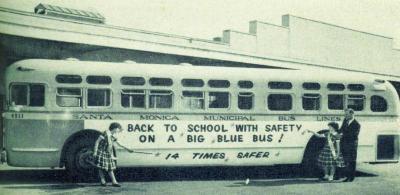Cities begin, expand mass transit service
 In the January 1964 edition of The American City, a summary of the 82nd annual meeting of the American Transit Association reported that a resurgence was occurring in mass transportation. ATA President John Baine supported that claim by citing a plan in San Francisco in which residents “elected to tax themselves almost a billion dollars for the creation of a 20th century rapid transit system. Similar projects are now formulating in Los Angeles, Atlanta and Baltimore.” He also noted a trend toward regional transit systems, such as those that had formed in Miami Dade County, St. Louis and Pittsburgh, where the Allegheny Port Authority was planning to integrate 30 transit companies. At the same conference, Chicago’s Mayor Richard J. Daley argued that “most of those who have little faith in the future of mass transit also have little faith in the future of the city.”
In the January 1964 edition of The American City, a summary of the 82nd annual meeting of the American Transit Association reported that a resurgence was occurring in mass transportation. ATA President John Baine supported that claim by citing a plan in San Francisco in which residents “elected to tax themselves almost a billion dollars for the creation of a 20th century rapid transit system. Similar projects are now formulating in Los Angeles, Atlanta and Baltimore.” He also noted a trend toward regional transit systems, such as those that had formed in Miami Dade County, St. Louis and Pittsburgh, where the Allegheny Port Authority was planning to integrate 30 transit companies. At the same conference, Chicago’s Mayor Richard J. Daley argued that “most of those who have little faith in the future of mass transit also have little faith in the future of the city.”
By August 1964, The American City editor’s letter reported on Congress’ passage of a mass-transit bill that earmarked $375 million for transit aid and authorized federal grants for the capital cost of mass-transportation facilities. Likely benefactors of the bill would be Atlanta, Boston, Baltimore, Chicago, Cleveland, Dallas, Detroit, Los Angeles, Milwaukee, Philadelphia, Pittsburgh, San Francisco and Washington, D.C. At the time, all of those cities were planning transit systems or expanding existing networks with neighboring jurisdictions.
In conclusion, the editorial argued, “We have no shortage of those who will talk long, loudly and with great emotion on such subjects as race, juvenile delinquency and the redistricting of state legislatures. We have fewer who realize that the basic essence of civilization is communication. When it breaks down, anarchy and desolation are not far behind. And nothing gives strength to this communication more than the easy mobility of people within this urban society. And the easiest and most economical of these in strong metropolitan centers is some type of mass transit. It brings strength and direction both to the city and its suburbs.”





















